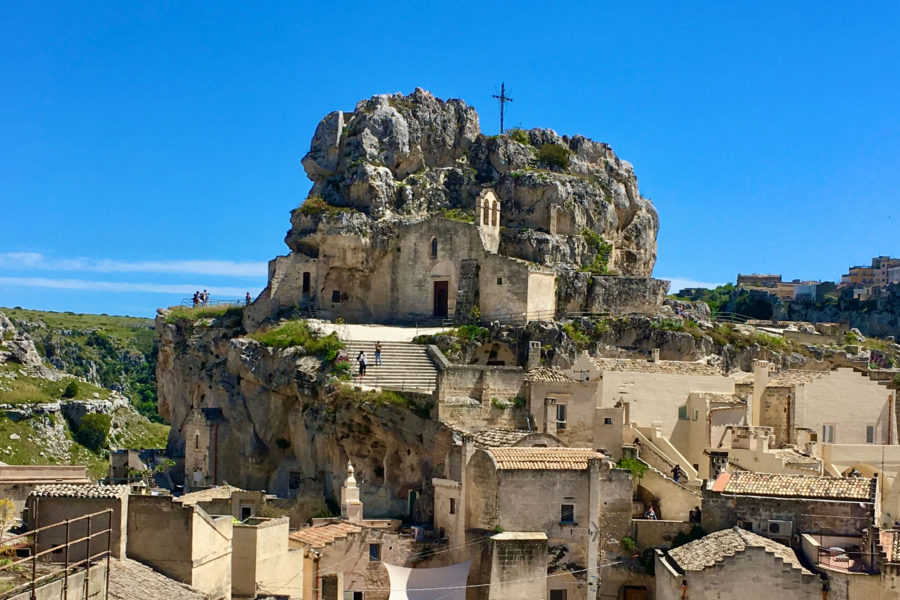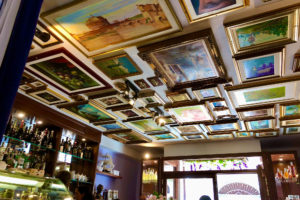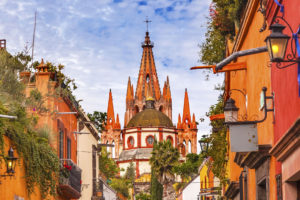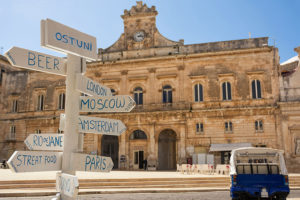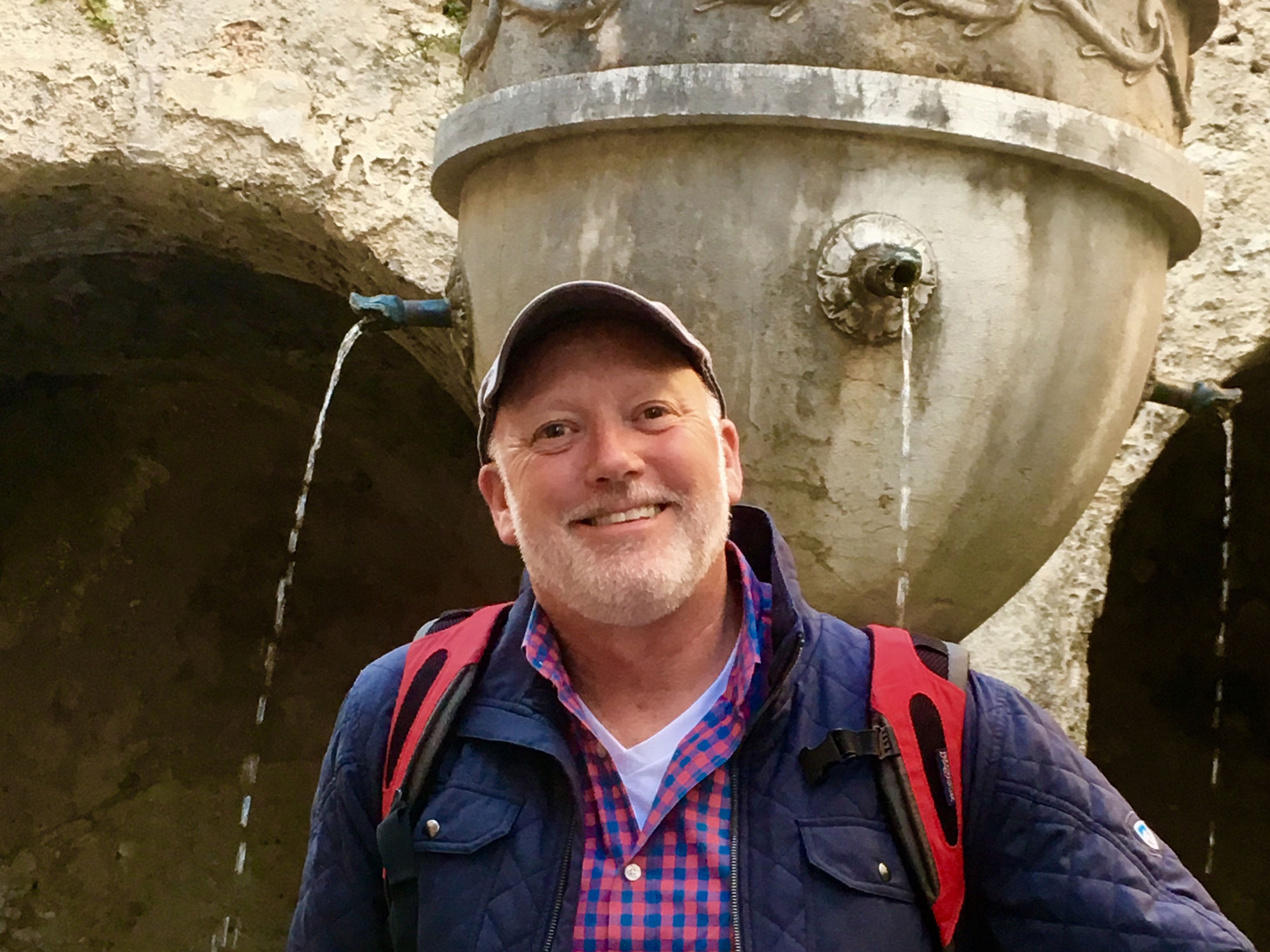Sassi di Matera, Basilicata, Italy
One of the many highlights during our tours of Puglia, is when we cross over into the Provence of Basilicata (about 50 miles from Bari) to visit the districts of Sassi di Matera, well-known for their ancient cave dwellings inhabited since the Paleolithic period (9,000 years ago), and the third oldest continuously inhabited city in the world. The Sassi di Matera, appeared in the film, “The Passion of the Christ,” and were entered in the list of UNESCO World Heritage Sites in 1993. Once a slum and considered Italy’s national disgrace, it was designated the European Cultural Capital in 2019.
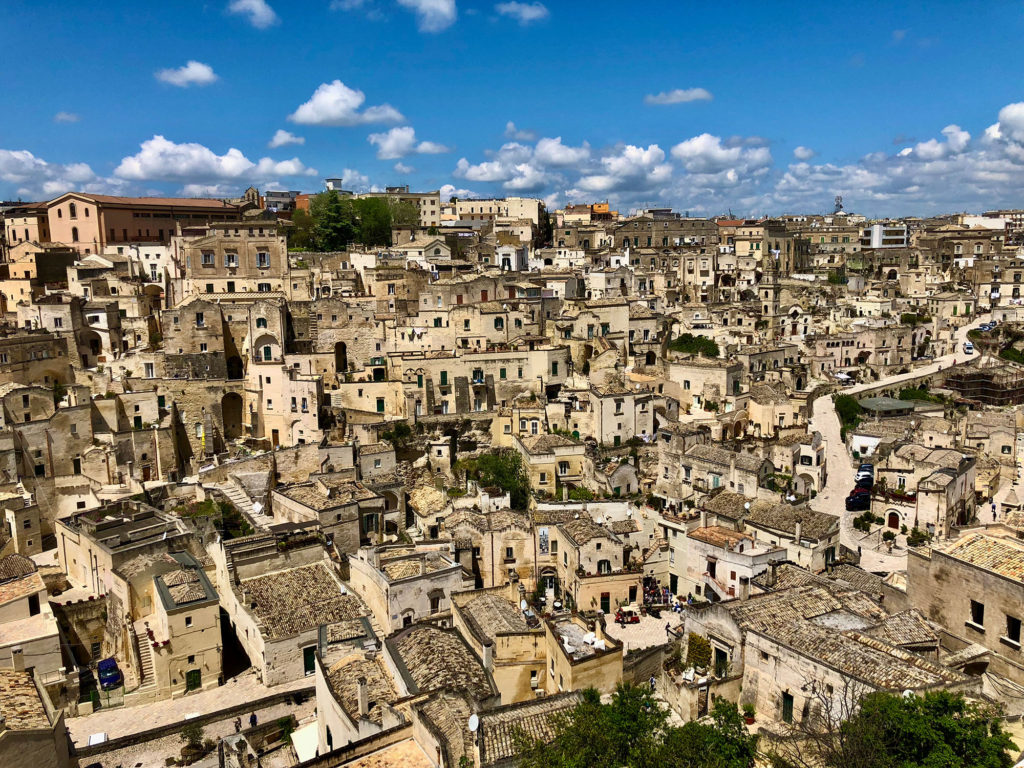
According to the Gallery Byzantium, “There are over 150 rock churches in Matera, but perhaps the most famous of the Matera’s Rupestrian Churches, Santa Maria de Idris is located at the top of Mount Errone, a large limestone cliff that rises in the middle of the Sasso Caveoso.” It is completely carved into the rock, beautifully utilizing its environment. Unfortunately, being carved into rock also makes the church susceptible to nature’s whims. In the fifteenth century, the church collapsed and the facade had to be rebuilt.
The name of the church – Idris – derives from the Greek word “Odigitria” (meaning guide of the street or water).
“The interior of the church is rather plain. It consists of a single room decorated with some once-fine frescoes that have deteriorated time and neglect. Luckily, some of the frescoes were removed in the early 1970s by the Sovrintendenza per I Beni Storici ed Artistici (the Government body responsible for the country’s historical and artistic heritage) because they were in an appalling state of conservation and because of the high degree of humidity inside the church.” They were then restored and kept at Matera’s Historical and Artistic Heritage Office so they may be enjoyed for centuries more.”
“The church of Santa Maria de Idris continued to function as a place of worship on certain feast days, until the 1940s.”

